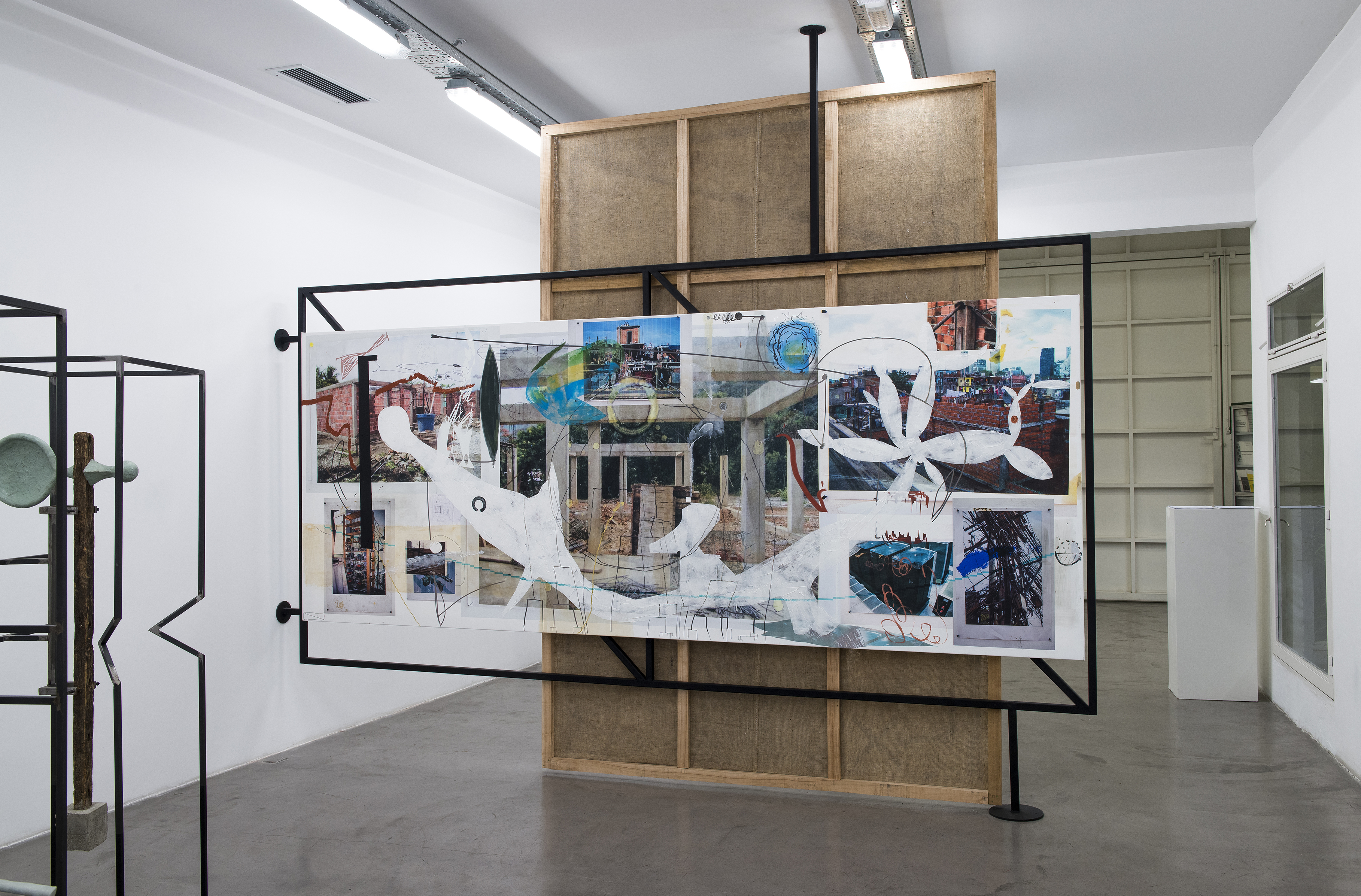Buenos Aires, 2017
Tomando como referencia al Leviatán de Hobbes y desde la óptica del descrédito de los modelos políticos, económicos y sociales capitalistas, el artista confeccionó una serie de piezas que investigan la maquinaria humana en estado de vitalidad y decadencia, paradójicamente superpuestas. En la entrada a la galería recibía al espectador un gran cuadro sobre arpillera, realizado con impresiones de imágenes intervenidas de manera digital y pintura, realizado a partir del frontispicio del libro de Hobbes de 1651. En él, el Soberano junto con los atributos de su tierra y su poder estaban ausentes, dejando una estructura en la que sólo quedaban compartimentos estancos y vacíos entre telas derruidas. Al atravesarlo, la pintura de un paisaje de la ciudad en hiperconstrucción y abandono estaba enfrentada a una serie de esculturas realizadas en torno a varas de alambrado. En el interior de la sala se encontraba la obra Cosechadora roja, una instalación realizada con hierro, fibra de vidrio, resinas y pigmento, que copiaba las superficies dañadas de una cosechadora incendiada, suspendidas cada una de ellas en su lugar correspondiente mediante una estructura realizada con hierros reciclados de antiguas máquinas agrícolas.
(english)



[Matter, Form, and Power] On the basis of the discredit of capitalist political, economic, and social models, the artist looked to Hobbes’s Leviathan as he made a series of works that investigated human machinery in a paradoxical state of vitality and decline. Greeting viewers at the gallery’s entrance was a large painting on burlap with prints of images that had been digitally intervened and painted on; the image was based on the frontispiece of the first edition of Hobbes’s book published in 1651. In the painting, the Sovereign, along with the attributes of his land and his power, was nowhere to be found; all that was left was a structure of isolated and empty compartments between ragged canvases. On the other side of that work there was a painting of an overbuilt and empty city opposite a series of metalbar sculptures. In the gallery proper was the work Campesina roja [Red Peasant], an installation in iron, fiberglass, resin, and pigment that replicated the damaged surfaces of a burned harvester; each stretch of the machine’s surface was held in place by a structure made of recycled iron parts of old agricultural machines.